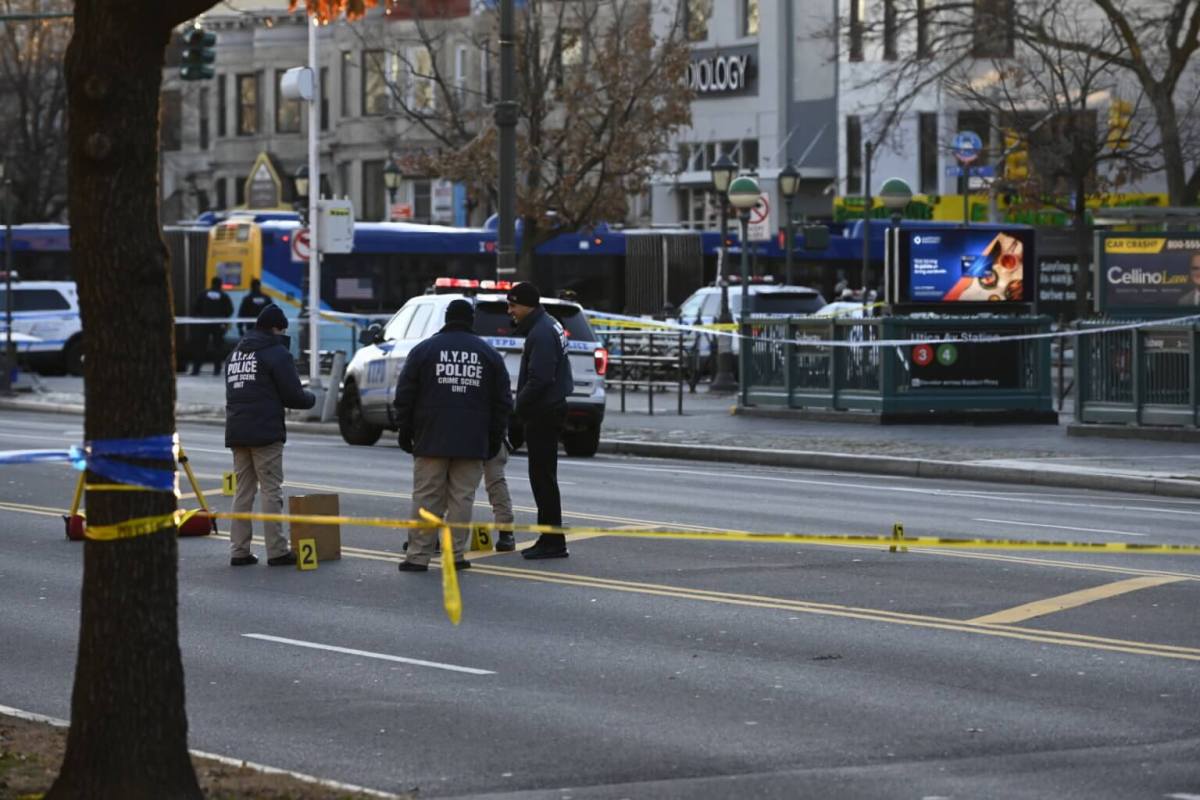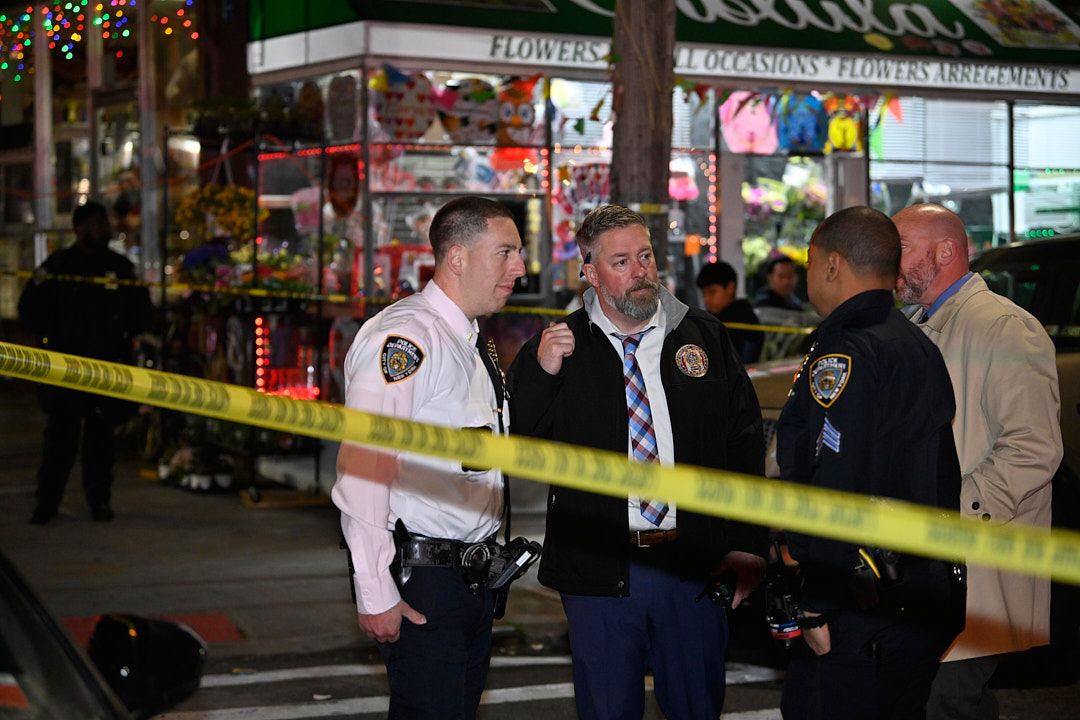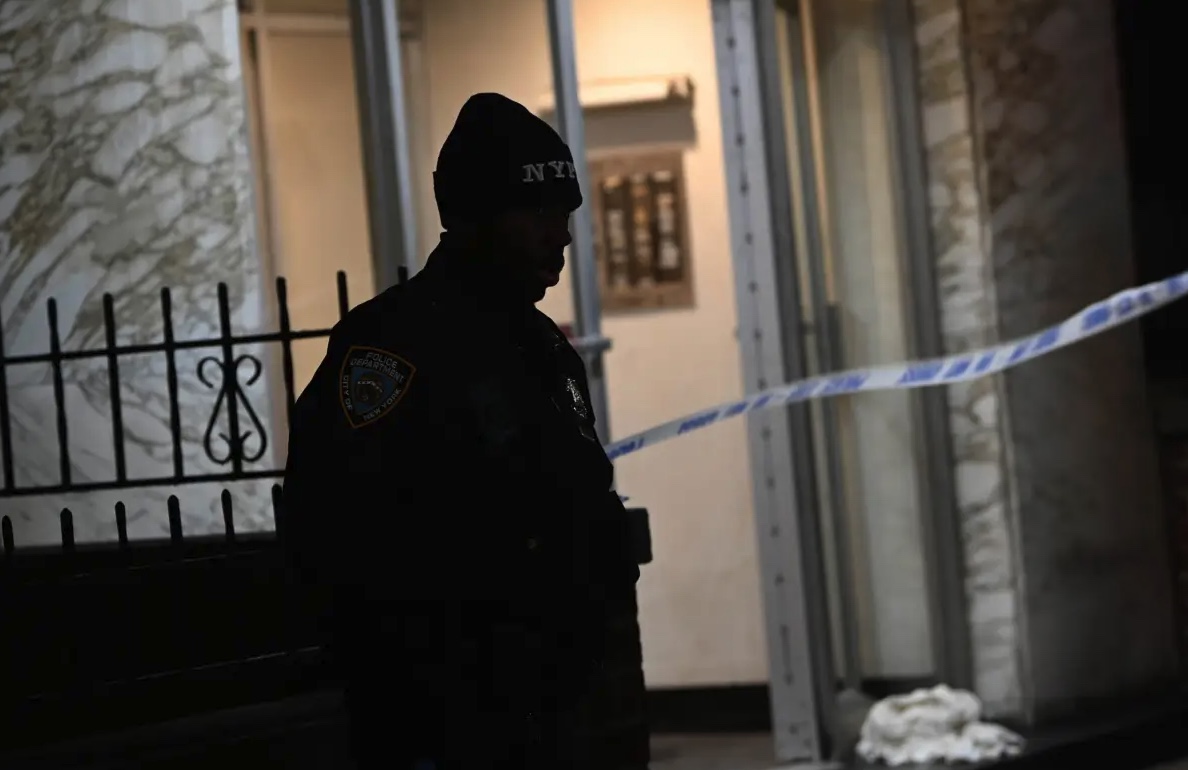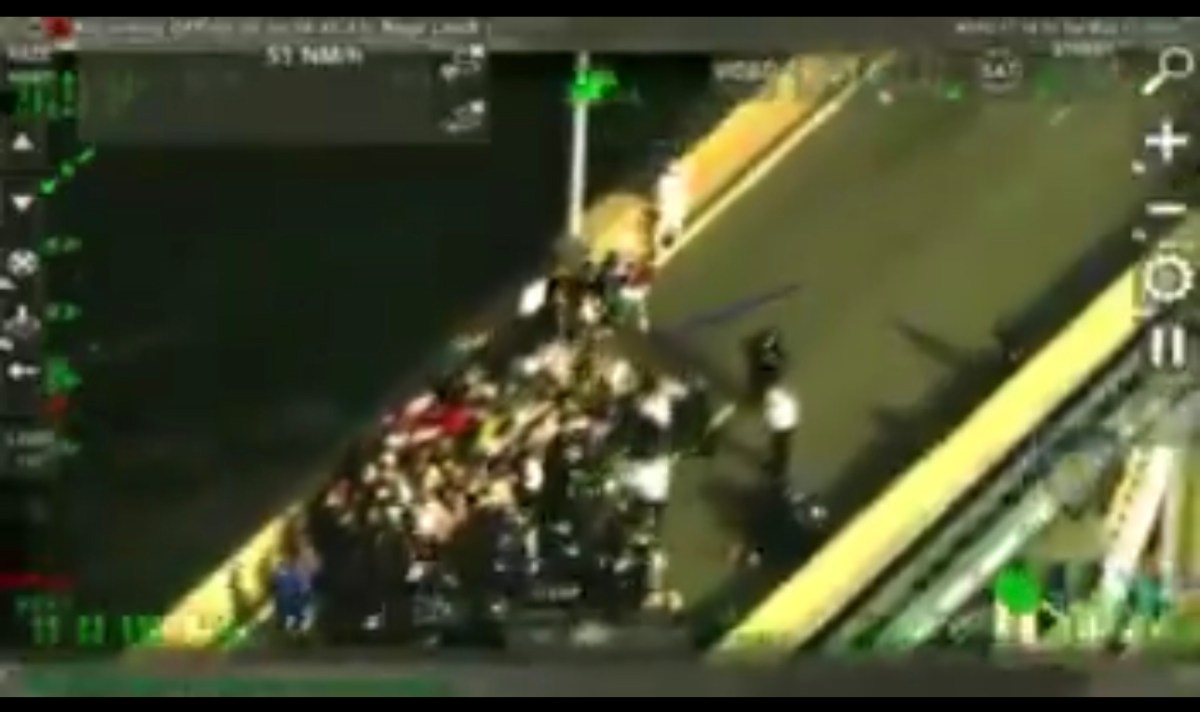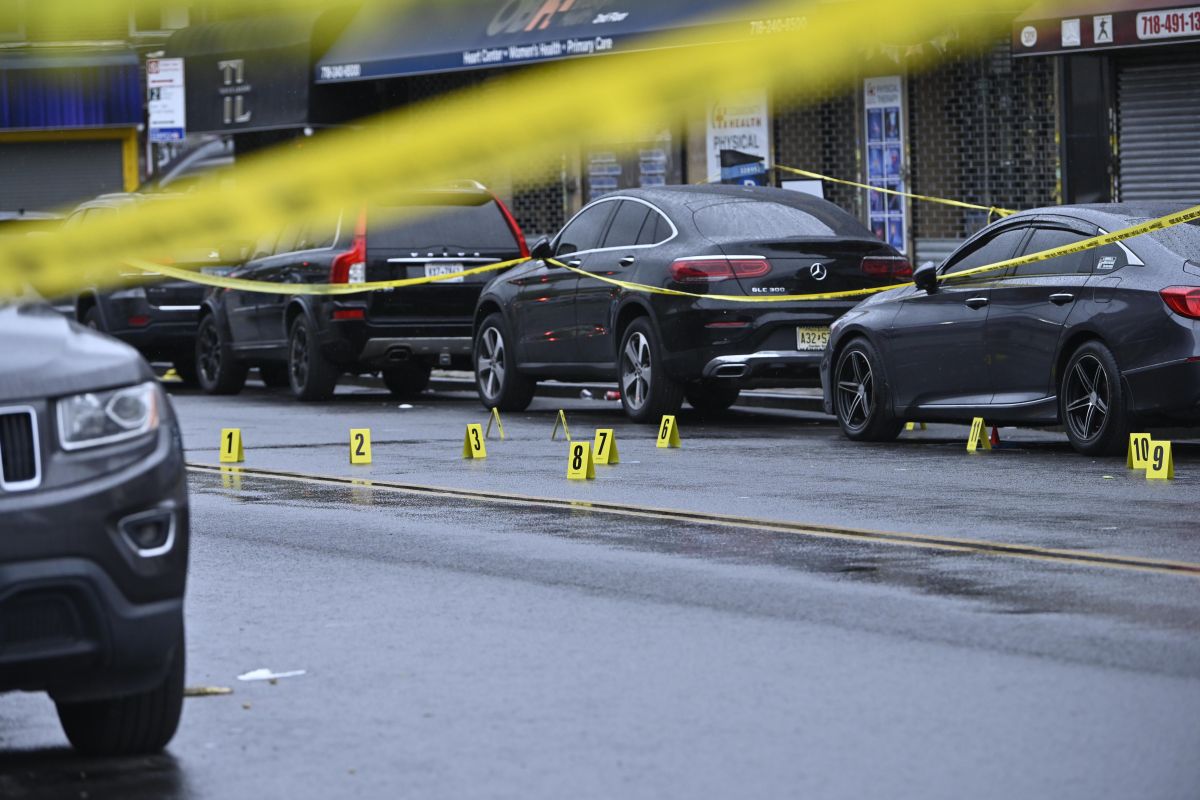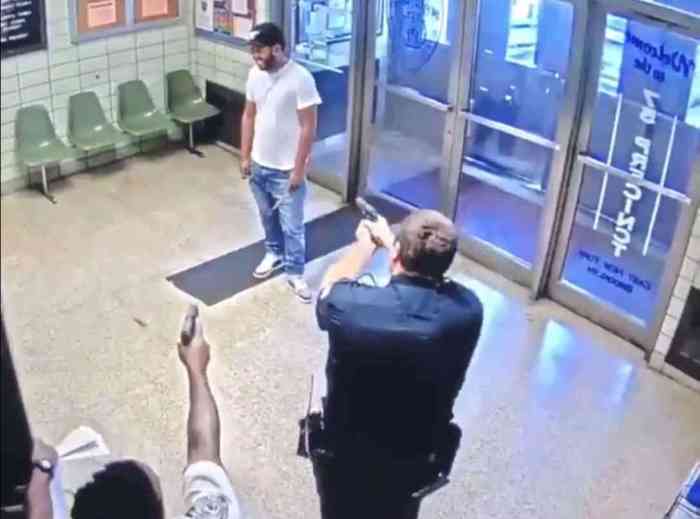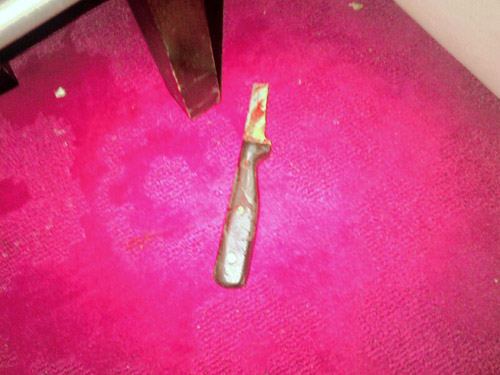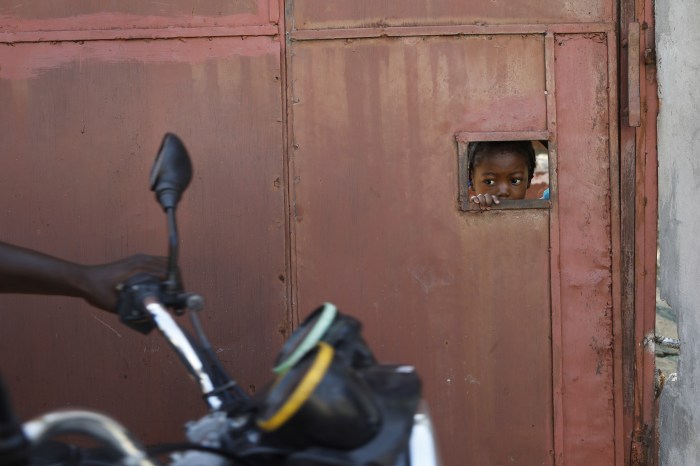Attorney General Letitia James’ office released body camera footage of the fatal December shooting of Eudes Pierre by NYPD officers near the Utica Avenue subway station on Eastern Parkway in Crown Heights. The videos confirm many of the details from the deadly encounter recounted by police in the days after the incident, though it did not confirm the NYPD’s central claim in the case, that Pierre’s death was a “suicide-by-cop.”
The videos were publicly released Tuesday afternoon by the AG’s office, which acts as a special prosecutor investigating all police-involved shootings in New York City. The six videos included footage from three area surveillance cameras, and body-cam footage from responding officers Ansari and Lan (first names not given) and Abreu Gerez, with the latter being the shooter.
Pierre, 26, was shot and killed by officers early in the morning of Dec. 20 during an apparent mental health episode. Cops responded to a 911 call of a man wielding a gun and knife in the station’s vicinity. When officers arrived and told Pierre to drop the weapon, he fled into the station, and unsuccessfully tried to tase him. Eventually, Pierre would leave the station, and officers shot at him when he started running at one cop.
Police would later claim that Pierre was trying to intentionally get himself killed by police officers, noting that no gun was found on Pierre, that a suicide note was found in his home, that police had been called to intervene in previous suicide attempts, and, perhaps most crucially, that Pierre himself had placed the 911 call. His family and their attorney cast initial doubt on the police’s claims and demanded that the NYPD or AG’s office hastily release body camera footage.
On Tuesday, the family’s lawyer, Sanford Rubenstein, applauded the AG’s “transparency” in releasing the footage but said that no conclusions could yet be drawn.
“The attorney general showed us that footage before they released it, and we appreciate the transparency of the New York State Attorney General in giving the family that courtesy,” Rubenstein told Brooklyn Paper. “Until the investigation is complete, it’s just pieces that have to be put together, and the family feels strongly this was a wrongful killing, and they have confidence that the Attorney General will do a fair and impartial investigation.”
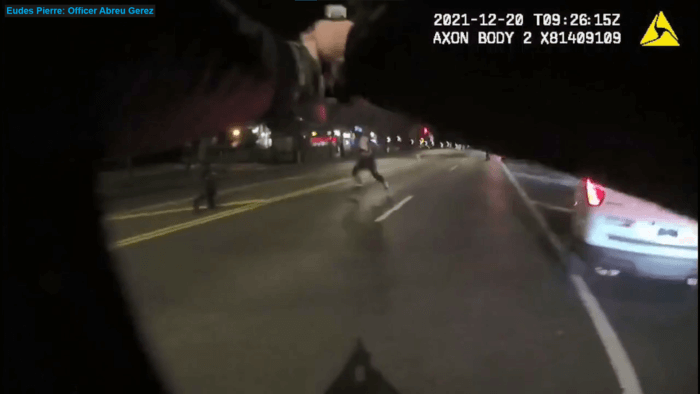
A few things are made clear in the videos: Pierre was holding a kitchen knife in one hand and had his other hand in his pocket while in the subway station, and an attempt to subdue him with a taser failed. Over several minutes, officers repeatedly attempted to make Pierre drop the knife and surrender, to no avail. Officer Lan could be heard noting that Pierre was pretending to hold something in his right hand right before Pierre left the station. As Pierre exited the station, he began running in the street toward Officer Lan, who shouted at him to put down the knife; someone yelled “shoot” as this occurred, and finally, Officer Gerez fired approximately seven rounds at Pierre, who collapsed to the ground in the middle of Eastern Parkway.
Officers handcuffed and searched Pierre before beginning to render aid, the videos show. Pierre’s body is blurred out in the videos while the officers provide first aid; an ambulance arrived about ten minutes after the shooting to transport him to Kings County Hospital, where he was later pronounced dead.
Rubenstein said that the footage released did not show the incident in close enough detail to verify the suicide-by-cop claim. It’s unclear if Pierre is holding the knife while running toward the officer.
“At this point, there’s no video that I’ve seen that actually shows close up what really happened here in terms of the confrontation of the NYPD with this mentally ill man,” Rubenstein said. “And until this video is available, then all we have is some video which does not actually show close-up the shooting to determine if this police officer or the other police officer had reasonable cause to fire and kill.”
Spokespersons for the NYPD and AG’s office did not respond to requests for further comment.
Pierre was a forward on the basketball team at the College of Staten Island and was a few credits shy of a degree before deciding to take a break from school, his mother Marguerite Jolivert said in December, and he was delivering food for Uber Eats at the time of his death. He had a history of mental illness and suicide attempts; his mother said that mental health counselors should have responded to her son’s episode, rather than police.
That idea has gained traction in the city in recent years as police have been accused of aggravating, rather than deescalating, mental health episodes. A pilot program in Harlem launched last year, called B-HEARD, is intended to replace armed police officers with trained mental health counselors in responding to emergency mental health calls, but early data suggested that most mental health calls were still being routed to the NYPD. A bill to replace the NYPD with mental health counselors in responding to mental health emergencies failed to advance in the City Council last year; after Pierre’s death, over 15,000 people signed a petition calling for the law’s passage, which would be renamed the Eudes Pierre Law and would designate mental health professionals as first responders to such calls.
The AG’s investigation into the killing remains underway. Rubenstein said the family “believes strongly this was a wrongful killing,” but for now is holding back on filing a civil action against the city until James’ office completes its investigation.



